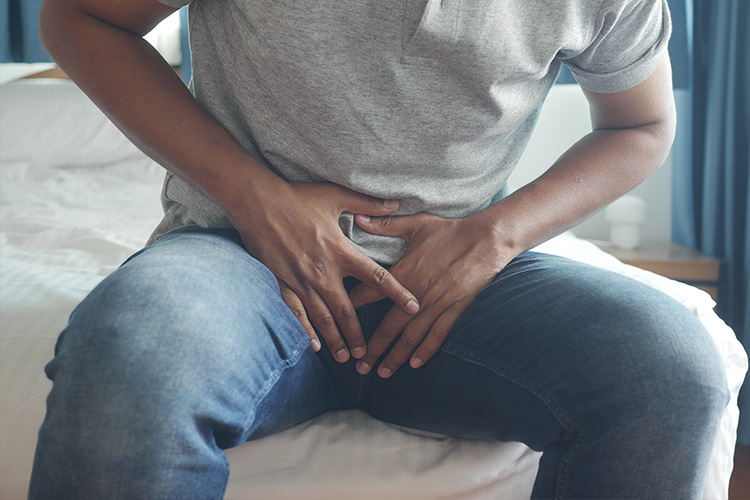Overview
Bumps on the penis, also known as genital lumps, can cause significant concern, as they may sometimes be linked to serious conditions such as sexually transmitted diseases (STDs) or cancer. However, not all penile bumps are dangerous. Some may be caused by benign conditions like cysts or prominent veins that are harmless.
Depending on the underlying cause, penile bumps may be accompanied by other symptoms, such as pain, itching, swelling, bruising, bleeding around the bump, fever, or changes in the appearance of the penis, including discoloration or alterations in shape.
If you notice any bumps on the penis, especially if they are accompanied by additional symptoms, it is advisable to consult a doctor. A professional evaluation is essential to determine the cause and provide the appropriate treatment.
Table of Contents
Possible Causes of Penis Lumps

Penis lumps can have a variety of causes, ranging from harmless conditions to more serious medical issues. Below are some common causes of lumps on the penis:
- Pimples or boils. These may form due to bacterial buildup caused by sweating, shaving, or wearing tight underwear. They are generally harmless and often resolve on their own.
- Cysts. These are yellowish, pebble-like lumps that form when hair follicles on the penis become blocked. They are usually not dangerous and don’t require treatment unless they cause discomfort.
- Angiomas. These are clusters of blood vessels that may appear as reddish or purplish lumps. While they may look unusual, they are generally harmless and don’t require medical intervention.
- Varicose veins. Prominent veins can develop on the penis, similar to varicose veins in the legs. This condition may occur in individuals who frequently sit or stand for extended periods or in pregnant women.
- Ingrown hair. Blocked hair growth can result in a lump on the skin of the penis. This condition is not serious and usually resolves with proper hygiene.
- Mollusca. Mollusca are small, firm, and round bumps caused by a viral infection, often transmitted through sexual contact. While they are generally painless, they can cause itching.
- Genital warts. These are caused by unprotected sexual contact and appear as clusters of small, rough bumps on the penis, groin, buttocks, or thighs.
- Syphilis. A sexually transmitted disease, syphilis can cause itchy bumps that may later develop into sores. Other symptoms include fever and body aches.
- Herpes. Herpes can lead to itchy, painful lumps on the penis, often transmitted through sexual activity. Sharing items like towels or utensils with an infected person can also spread this condition.
- Lichen sclerosus. This condition affects the genital area, causing white patches and small bumps. It is more common in menopausal women but can occasionally affect men.
- Pearly penile papules (PPP). These are small, white or skin-colored bumps that form around the head of the penis. They are not contagious or harmful but can appear alarming.
- Fordyce spots. Enlarged oil glands can appear as small, white bumps on the penis or scrotum. These are harmless and do not require treatment.
- Penile cancer. Though rare, penile cancer can cause lumps on the penis, often accompanied by changes in skin color, pain, or sores. It is more common in older men, smokers, or those with HPV infection.
Understanding the possible causes of penile lumps is essential for determining whether medical attention is necessary. While many of these conditions are harmless, consulting a doctor is advised if the lumps are painful, persist, or are accompanied by other concerning symptoms.
When to See a Doctor
While some lumps on the penis may be harmless and resolve on their own, others can indicate underlying medical conditions that require attention. It is important to consult a doctor if:
- The lump persists for more than two weeks. A lump that does not go away or shows no signs of improvement should be evaluated to rule out serious conditions.
- You experience additional symptoms. Pain, itching, swelling, bleeding, fever, or unusual discharge from the lump are warning signs that may indicate an infection or other health issue.
- The lump changes in size, color, or appearance. Sudden growth, discoloration, or changes in the texture of the lump may signal a more serious condition, such as cancer.
- There are sores or ulcers. Open sores or ulcers on the penis, especially if painful or persistent, could indicate sexually transmitted infections like syphilis or herpes.
- You have unprotected sexual contact. If you suspect the lump may be related to an STD, it is crucial to get tested and treated promptly to prevent complications and the spread of the infection.
- You experience systemic symptoms. Symptoms such as fatigue, fever, or swollen lymph nodes alongside a lump may suggest a more serious infection or condition requiring immediate medical attention.
What Type of Doctor to Seek

You can start with a general practitioner who can assess the lump and refer you to a specialist if needed. Depending on the findings, you may be referred to:
- A urologist for issues related to the male reproductive system.
- A dermatologist for skin-related conditions, such as warts or cysts.
- An infectious disease specialist if the lump is suspected to be caused by an STD or other infection.
What to Expect From Your First Doctor Visit
During your visit, the doctor will:
- Ask about your medical history, symptoms, and any recent sexual activity.
- Perform a physical examination to assess the lump’s size, location, and characteristics.
- Recommend tests, such as blood work, urine tests, swabs, or biopsies, to identify the underlying cause.
Based on the results, the doctor will suggest appropriate treatments, which may include medications, surgical removal, or further specialist care. Early consultation ensures proper diagnosis and management, helping to prevent complications.
Penis Lumps FAQs
Bumps or lumps on the penis can raise many questions and concerns. Below are some frequently asked questions to help you better understand this condition:
- What causes lumps on the penis?
Lumps can be caused by various factors, including pimples, cysts, varicose veins, ingrown hairs, infections like herpes or syphilis, and even rare conditions like penile cancer. - Are all penile lumps dangerous?
No, many lumps are harmless, such as cysts, pimples, or Fordyce spots. However, lumps associated with pain, changes in appearance, or additional symptoms may require medical evaluation. - Can sexually transmitted diseases (STDs) cause penis lumps?
Yes, certain STDs, such as herpes, syphilis, and genital warts, can cause lumps or bumps on the penis. These often come with other symptoms like itching, sores, or discharge. - How can I tell if a penis lump is serious?
A lump is more likely to be serious if it is painful, grows quickly, changes color, bleeds, or is accompanied by systemic symptoms like fever or fatigue. Persistent lumps should also be evaluated by a doctor. - Can cancer cause lumps on the penis?
Yes, although rare, penile cancer can present as lumps or sores on the penis. It is more common in older men or those with HPV infections and often requires prompt medical attention. - What should I do if I notice a lump on my penis?
Monitor the lump for changes in size, color, or symptoms. If the lump persists for more than two weeks or is accompanied by other concerning symptoms, consult a doctor. - Can penile lumps go away on their own?
Some lumps, such as pimples or ingrown hairs, may resolve without treatment. However, others, particularly those caused by infections or underlying conditions, may require medical intervention. - Are pearly penile papules (PPP) harmful?
No, pearly penile papules are benign, non-contagious bumps that commonly form around the head of the penis. They do not require treatment unless they cause cosmetic concerns. - Can I prevent lumps on my penis?
Practicing good hygiene, using protection during sexual activity, wearing loose-fitting underwear, and avoiding irritants can reduce the risk of developing penile lumps. - When should I see a doctor about a penis lump?
Seek medical advice if the lump persists for more than two weeks, is painful, changes in appearance, or is accompanied by other symptoms like fever, discharge, or sores.
If you have concerns about a lump on your penis, it’s always better to consult a healthcare professional for proper diagnosis and peace of mind. Early intervention can prevent complications and ensure appropriate treatment.


